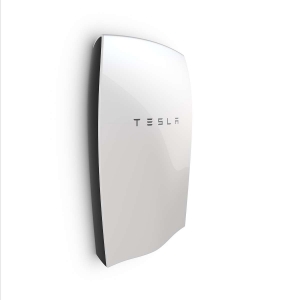Last April in Hawthorne (California), founder of Tesla Motors Elon Musk, the current leader in the electric vehicles sector, made an entrance in a spectacular fashion during his brand new home batteries’ debut conference.
Tesla wants to revolutionize the energy sector but can it really be done?
A cheering and overall overexcited crowd greets Elon Musk as he enters the stage. With a curt nod of his head, Musk lets an electrifying silence settle before introducing the firm’s new product.
Due to its nature, Tesla’s Powerwall was bound to draw attention and change to both the energy sector and the company itself. Indeed, Powerwall’s launch was a way for the company to introduce their new field of activity: « TESLA Energy ». This new area of work is completely energy-innovation-oriented and is bound to reduce greenhouse gas emissions over time.
Powerwall’s aim is to make us change the way we consume energy. As Elon Musk foresaw: renewable energies still have a huge under-used potential.
Following the same path he went down with his former projects, Musk (co-founder of online leading secured payment Paypal) is once again set on making his product user-friendly. So what is the drill? Well, Tesla wants photovoltaic energy producers to be equipped with its home batteries (the previously mentioned Powerwall) in order for them to be able to store the energy they produce.
A revolution underway? Yes, but for whom?
The stakes for the private users lie in the possibility to be off-grid and thus to be able to consume their own PV production. This would help them lead an energy self-sufficient life, by living independently from the grid.
Albeit providing no greenhouse gas emissions, energies depending from weather conditions are considered intermittent because they cannot provide energy 24/7. It is the case with solar energy, which does not produce energy at night, or when the sky is too clouded.
For now, solar energy users who want to be self-sufficient have to at least partially rely on energy coming from the electrical network.
Because of changing feed-in tariffs (FiT) and of pro-renewable incentives issued by governments throughout the world, people have thus far been encouraged to sell their production back to the grid system operators instead of using it for themselves.
Powerwall is a home battery intended for both companies and private users which can store energy from solar origin. Once full, the energy stored in the Powerwall can be reused even if the production is lower than usual or during night-time.
Tesla home batteries were also designed to be of use not only for private users but also for SMB and for isolated small communities. The way to use them remains the same but the battery storage volume is extended to cater to bigger uses while making the price range for these still quite affordable.
Is Tesla a wonder-worker?
Tesla’s founder has once again bet on innovation and is tackling a market that was before then more supply- than demand-oriented.
However, the energy self-sufficiency path is not as cost-efficient as it seems. Countries where the kWh costs are expensive or where the grid system operators stopped buying the production from renewable energies at preferential rates are the ones who will truly benefit from this novelty. Germany and the USA are two good examples.
The French exception
In France, if one wanted to go off-grid and use the Powerwall to guaranty their energy self-sufficiency, the prime cost per used kWh, without including the cost of mounting, would be superior to the one that EDF offers to buy the residential PV production on a time period of 20 years. As Tesla made the economic model for the batteries based on the United States’ situation, this cost is inexpensive for the US. However, it is not the case for several other countries.
What about the French market?
The ratings for kWh are somewhat low in France in comparison to other countries. That is why it is safe to assume that this innovation can be named as such only for countries that have rating costs above ours regarding energy.
Ultimately, the solution that Tesla came up with is revolutionary in a sense but some parameters of the market have yet to be taken into account in order for this model to apply in other countries, as explained previously.
Energy self-sufficiency is still not as widespread as it could be throughout the world and France is no exception, although there already is a market for it in France that will grow over time. This growth is also explained by EDF’s declining feed-in tariffs.
Last April, the government, eager to raise the rate of renewables in the energy mix, has re-evaluated these FiT. Unfortunately, they are forecast to be lowered again some time in 2015. Because of the ever changing nature of these FiT, the energy self-sufficiency trend could take off in France.
Reuniwatt is dedicated to anticipating future needs while guarantying a massive and secure injection of solar power into the grid thanks to our forecasting expertise. To assimilate forecasting data to energy self-sufficiency, support systems could help optimize the use of batteries and help users get off-grid.
For more information regarding our expertise on photovoltaic forecasting and the opportunities that could bloom from energy self-sufficiency, contact us or come visit us on booth A4 during the SG Paris 2015 exhibition on May 27-29 2015.
